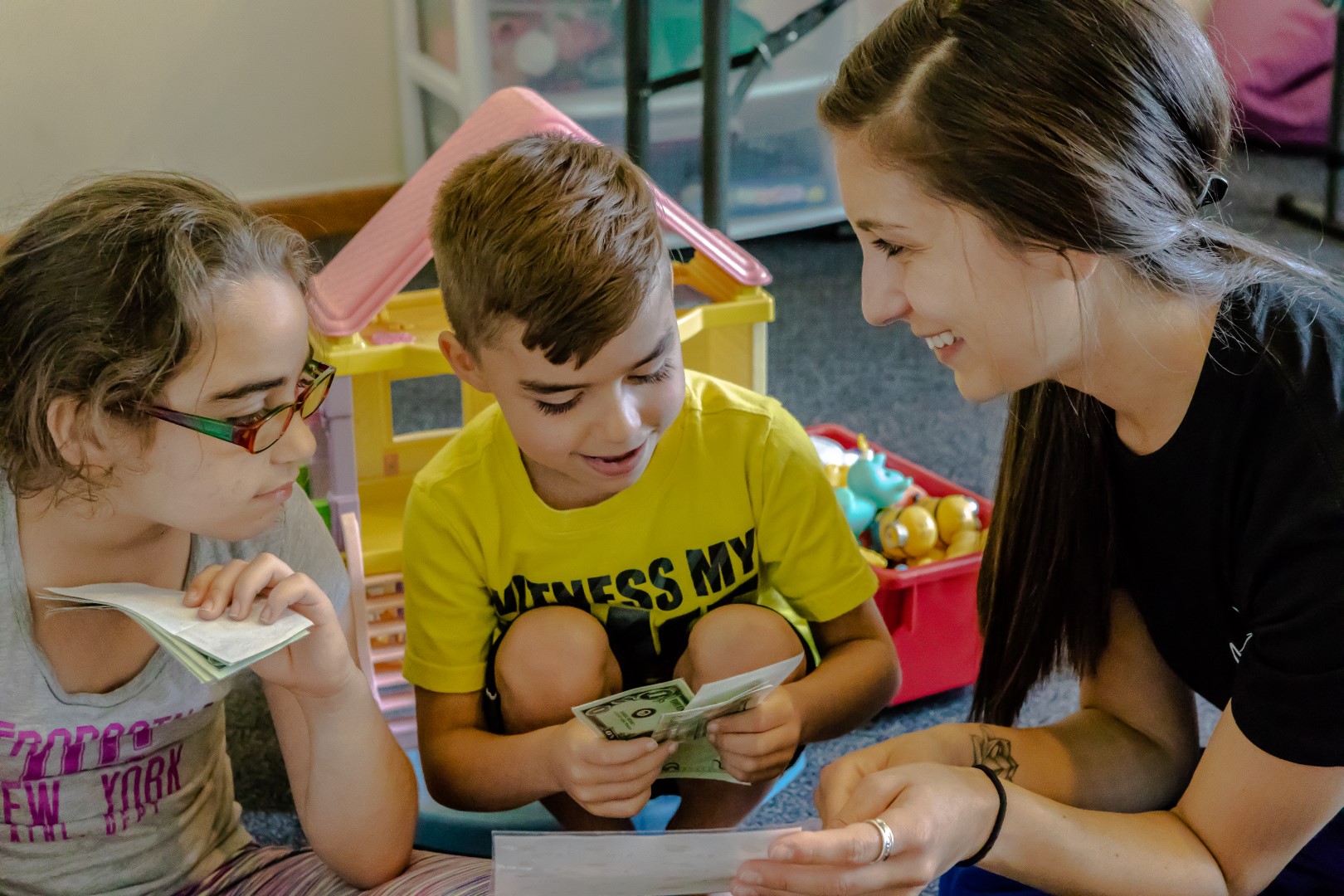Occupational Therapy

Occupational therapy is a profession that enables people to participate in daily activities and live their life to the fullest. It is for individuals of all ages to improve skills that help them perform tasks at home, at school, at work, and at play. An occupational therapist is an enabler of independence.
Pediatric OT is centered on supporting children in developing critical skills they need to become healthy, independent adults, and to help successfully participate in “occupations” or meaningful daily activities.
What is a child’s “occupation?”
The primary occupation for a child is…PLAY! Play is essential for development. Children learn through play about the world around them.
Other childhood occupations include Activities of Daily Living (ADLs) and self-care, such as feeding and eating, dressing and hygiene, toileting; Education, ranging from pre-school all the way to higher education; and Social participation.
Occupational therapy can assist individuals by working on a variety of skills related to their occupations, such as:
- Fine and gross motor skills
- Hand-eye coordination
- Visual motor and visual perceptual skills
- Feeding difficulties
- Self-care
- Sensory processing
- Decreased strength or range of motion
- Social difficulties
What does it look like?
Interventions for occupational therapy can have a variety of approaches, depending on your child’s specific needs. Some interventions may include sensory integration and sensory-based approaches; developmental skill-based programming; parent-directed/mediated approaches; life skills, functional academics, and vocational preparation.
All children interpret sensory input differently, and thus treatment must be individualized, and embedded into daily routines and play. Some of the goals within OT are to give individuals tools and set expectations, require movement with purpose throughout the day, limit time to wander, provide regular vestibular/proprioceptive/tactile input, and can include items such as fidget toys, visual supports, swings, and other motor materials.

What to Expect
While many of clients have a diagnosis of autism, an ASD diagnosis is not necessary to receive occupational therapy from the Spark Center. Our therapists work with a variety of disorders and diagnoses. Like with most of our services, different diagnoses may change insurance coverage, so it is important to be familiar with your insurance benefits.
These are a few things you can expect when receiving occupational therapy services from us.
Initial Evaluation
Prior to starting services, your child will be evaluated by an occupational therapist to determine areas of concern, including motor skills, visual-motor integration, and sensory needs and deficits. The evaluation process will include standardized assessments, as well as parent input and interview. The evaluation typically takes approximately 45 minutes, and may include having the caregivers complete a sensory profile for the child. Within approximately one week, the occupational therapist will analyze the findings, and write a report summarizing the results, and develop treatment goals and recommendations to be reviewed with caregivers. If services are recommended, the therapist will work with you to schedule treatment sessions.
Monthly Updates
Approximately every 60 days, a written progress note will be sent home. The progress note will review the current goals your child is working on, their progress towards these goals, recommendations for home practice, and any upcoming changes. You or the occupational therapist may schedule parent meetings to further review this information if necessary, or to schedule ongoing monthly caregiver support and trainings.
Re-Evaluations
At least every 12 months, the occupational therapist will re-assess your child’s motor skills and sensory processing. Any current areas of concern as well as any arising concerns may be addressed. Based on the findings, the therapist will adjust goals and create updated recommendations for services. This information will be sent home and/or reviewed with you. Re-evaluations may occur after less than 12 months if deemed appropriate.
Scheduling Options
Each occupational therapy session is typically 30 or 45 minutes (dependent on your child’s abilities and tolerance) and depending on specific insurance requirements and limits, may be scheduled between 1 and 4 times per week. If your child also receives ABA services at the Spark Center, OT sessions would occur within that particular schedule. Otherwise, your child’s therapist and our scheduling team will work with you to determine your child’s schedule.
Our occupational therapy services are available between 8:30-5:30 Monday-Thursday, and 8:30-3:30 on Fridays. If your preferred time is unavailable, we can place you on a waitlist for that preferred time.
Process
Ready to start occupational therapy for your child? Follow the steps outlined below:
Fill out our Referral Form
Click here to fill out our secure referral form, and someone from our team will reach out with more information about our onboarding process, and any potential wait times. Alternatively, you can give our office a call at 248-238-9772.
Insurance Verification and Paperwork
You will need to have a script or referral order from your child’s doctor. We will verify your insurance benefits, but you are also responsible for knowing your own benefits. If you need assistance with finding out this information, let us know! We are happy to help. In the meantime, we will have you fill out our onboarding paperwork. You can also use this form to help check your benefits.
Schedule the Evaluation
Once you complete the paperwork and we have verified your insurance benefits, we will work with you to schedule the initial evaluation, and the follow up meeting with your therapist!


